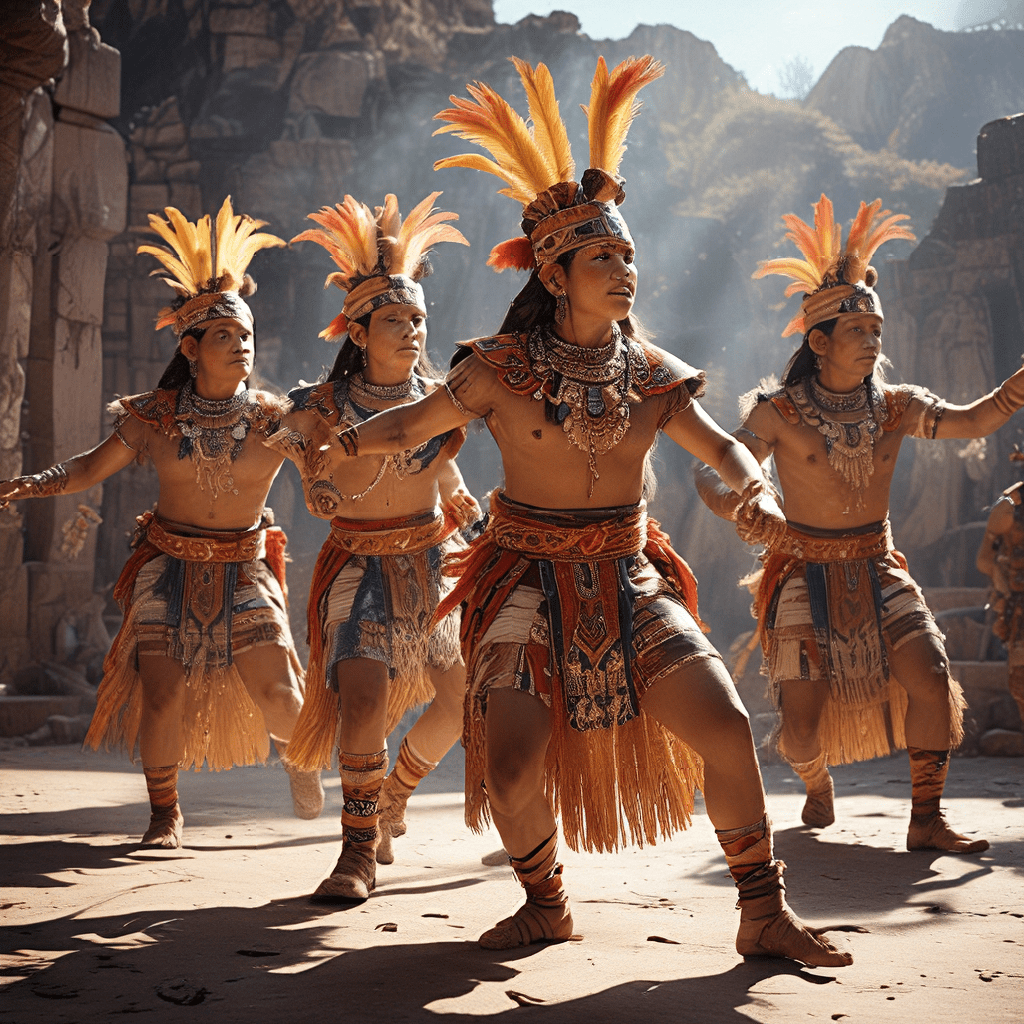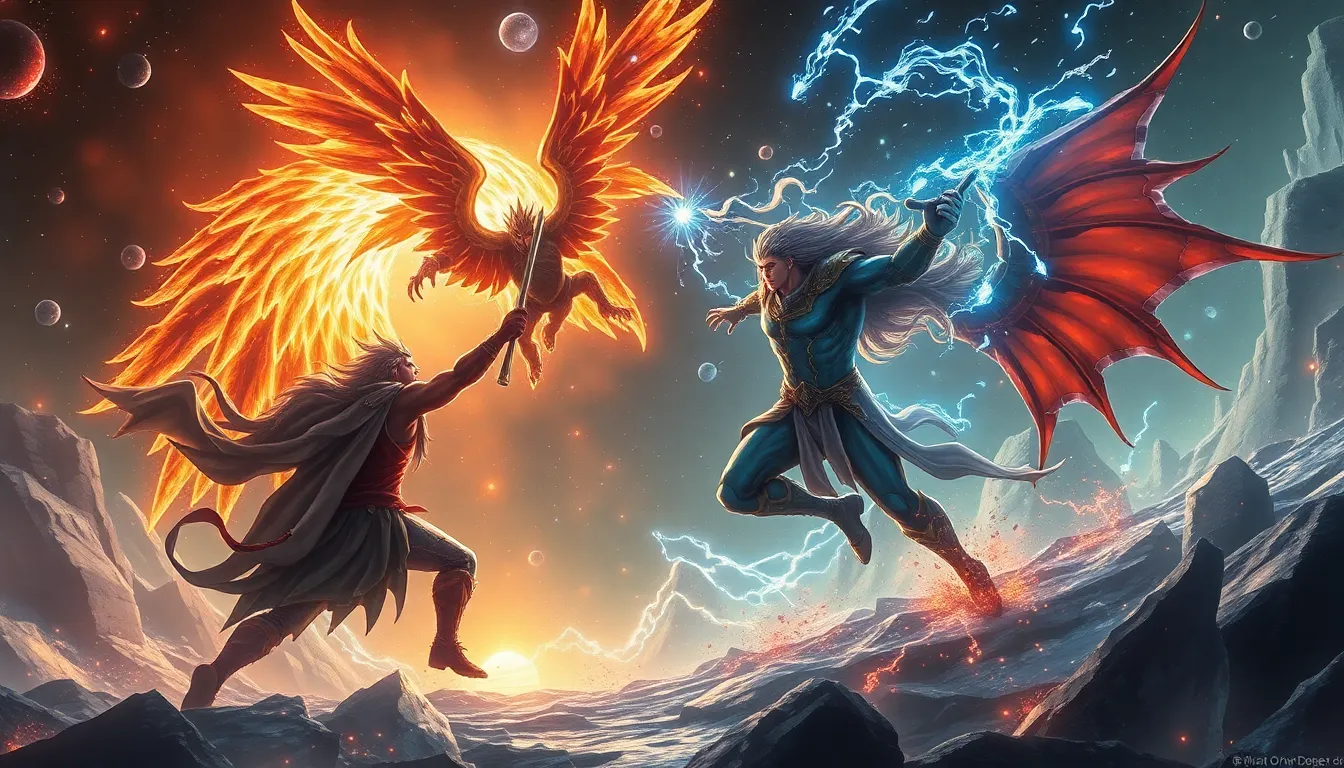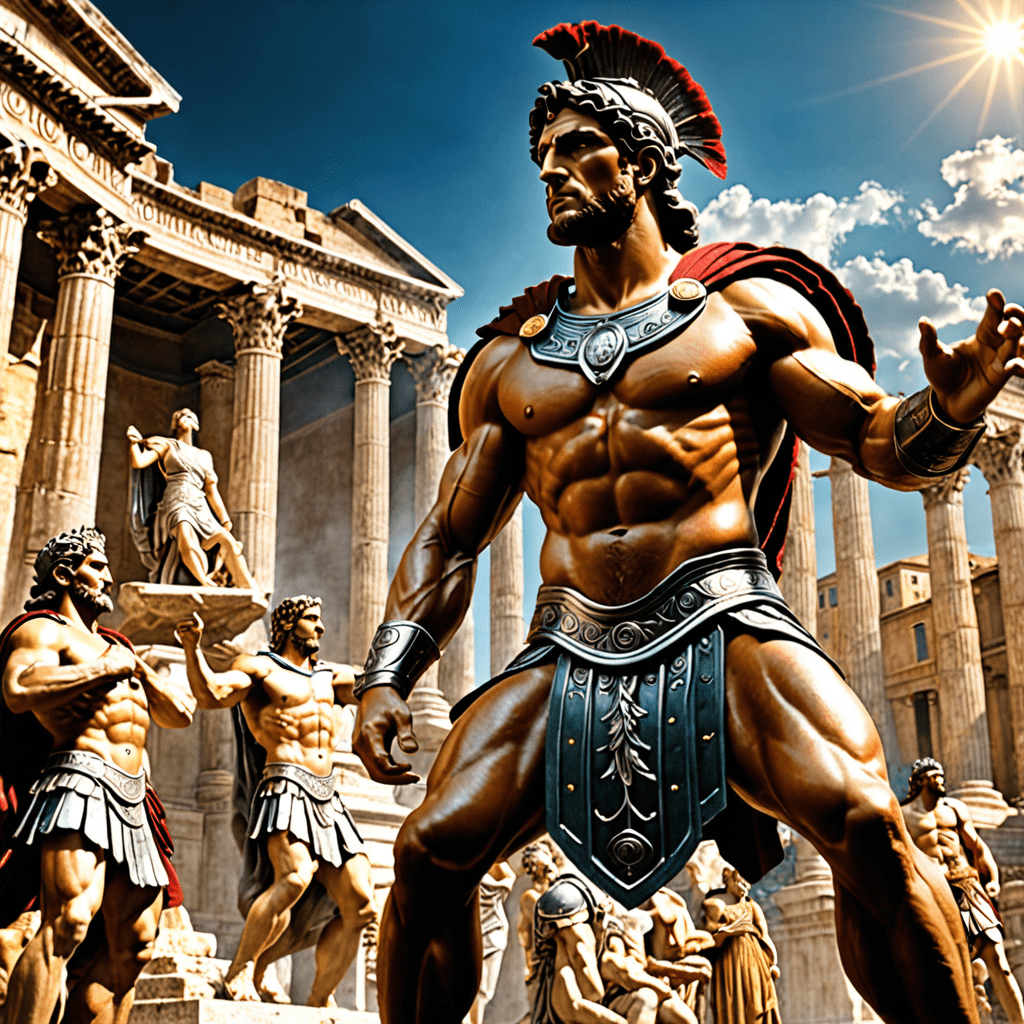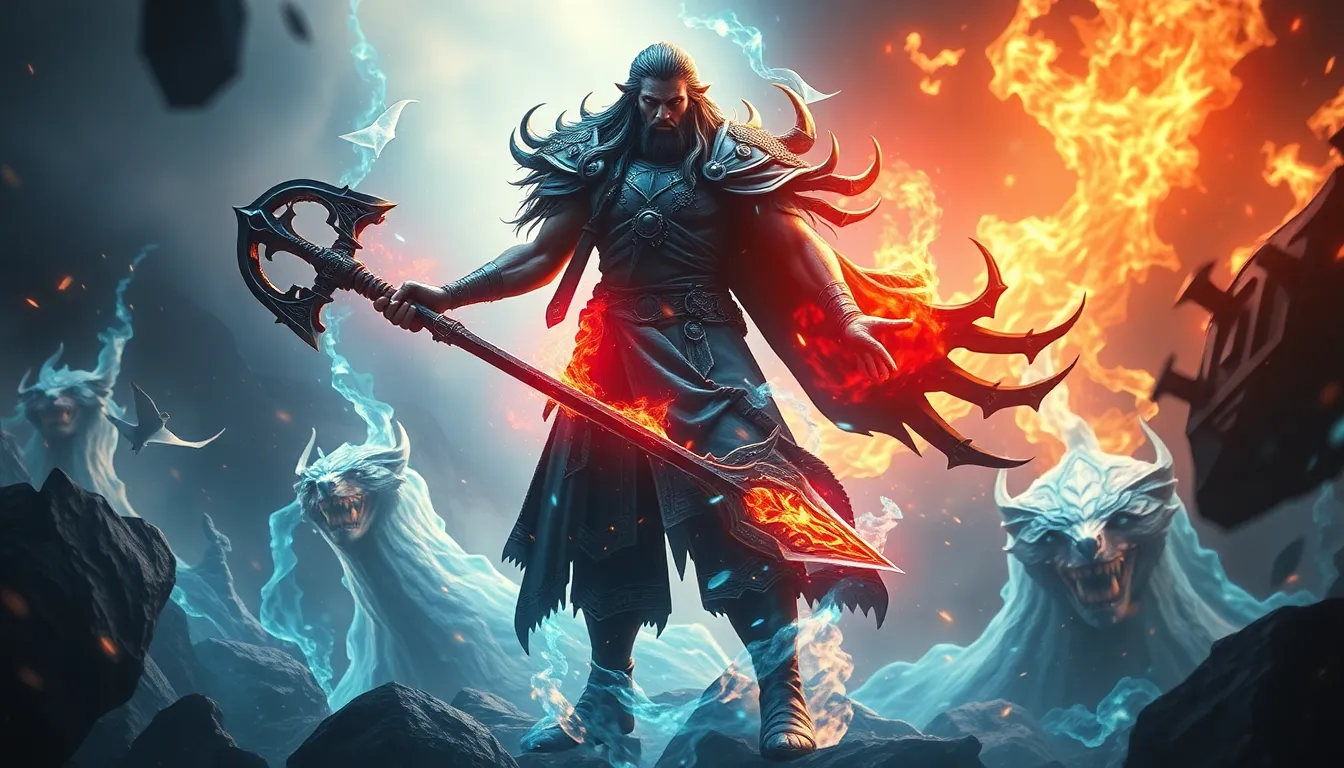Incan Mythological Dance: Rhythms of the Gods
The Incan civilization, renowned for its architectural marvels and intricate social structure, also possessed a rich tapestry of mythology and ritual practices. At the heart of this ancient culture lay the belief in a divine realm populated by powerful deities who shaped the cosmos, dictated the laws of nature, and influenced the lives of mortals. These celestial beings were not simply abstract concepts; they were embodied in elaborate ceremonies and, most importantly, in the expressive language of dance. Incan dance, more than just a form of entertainment, served as a sacred conduit to the divine, a way to communicate with the gods, and to celebrate the rhythms of life and creation.
1. The Divine Realm: Incan Cosmology and the Gods
The Incan worldview, known as "cosmovision," was a complex tapestry of interconnected forces. At its apex resided Viracocha, the creator deity, responsible for bringing forth the universe, humanity, and everything in between. Viracocha was often depicted as a wise and benevolent figure, but his power and unpredictability commanded respect and reverence. Below Viracocha, a pantheon of lesser deities held sway over different aspects of the natural world. The sun god Inti, revered as the source of life and warmth, held a prominent place in Incan mythology. His sister, the moon goddess Mama Quilla, governed the lunar cycles, tides, and female fertility. These deities were not passive observers; they actively intervened in human affairs, rewarding those who honored them and punishing those who transgressed.
2. A Dance with the Sacred: The Significance of Incan Dance in Ritual and Ceremony
Incan dance was an integral part of their religious and social life. Performed in elaborate ceremonies, these dances served a multitude of purposes, including:
- Honoring the gods: Dances were dedicated to specific deities, offering praise and supplication.
- Seeking blessings: Farmers would dance to ensure bountiful harvests, while warriors would dance for victory in battle.
- Marking life cycle events: Births, marriages, and deaths were celebrated with dances that reflected the stages of life.
- Maintaining cosmic balance: Dance was seen as a way to maintain harmony between the human world and the divine realm.
3. The Language of Movement: Interpreting the Meaning of Incan Dance
Incan dance was not simply a random display of movement. Each step, gesture, and posture carried specific meaning, conveying complex narratives, emotions, and beliefs. The dancers' costumes, adorned with feathers, masks, and intricate embroidery, further enhanced the symbolism. Scholars believe that the movements, music, and costumes all worked in concert to create a powerful and evocative experience, drawing the participants into a shared, sacred space.
4. Guardians of the Earth: The Role of Pachamama in Incan Myth and Dance
Pachamama, the Earth Mother, held a profound position in Incan mythology. Revered as the provider of sustenance, she was responsible for fertility, harvests, and the well-being of the people. Incan dance celebrated Pachamama's bounty and sought her favor. Ceremonies often involved offerings of food, coca leaves, and precious metals, while dances depicted the cycle of planting, growth, and harvest, acknowledging the interconnectedness of humanity and nature.
5. Sun, Moon, and Stars: Celestial Bodies in Incan Mythological Dance
The Incan fascination with the celestial bodies is reflected in their dance traditions. Dances honoring Inti, the sun god, were often held during solstices and equinoxes, marking the shifting seasons and the power of the sun. The moon goddess Mama Quilla was celebrated in dances that reflected the lunar cycles and her influence over feminine power and fertility. Even the stars played a role in Incan mythology and dance, with constellations providing inspiration for intricate patterns and narratives.
6. The Rhythm of Creation: Incan Myths of Origins and their Expression in Dance
The Incan people held deep respect for the origins of life and the universe. Their myths of creation, passed down through generations, provided a framework for understanding their place in the cosmos and their relationship with the divine. These creation myths were often dramatized through dance, allowing them to be shared and experienced on a visceral level.
One popular creation myth tells the tale of Viracocha, the creator god, who emerged from Lake Titicaca and sculpted the world from chaos. He formed mountains, rivers, and valleys, and breathed life into humans. This myth, often depicted in dance, emphasizes the active role of the divine in bringing order to the world and establishing the foundations of human existence.
Another creation myth focuses on the emergence of the sun god Inti. In this story, Viracocha commands a group of gods to become the first sun, but they are too afraid to accept the task. Inti, a brave and selfless god, steps forward to take on the responsibility, ensuring the light and warmth that sustains life. This myth is celebrated in dances that depict Inti's journey across the sky, bringing light and energy to the world.
7. Beyond the Physical: The Spiritual Dimension of Incan Dance
Incan dance was not simply a physical performance; it was a profound spiritual experience. The dancers believed that through movement, music, and ritual, they could transcend the physical realm and connect with the divine. These dances were not merely representations of stories or beliefs but invitations to participate in a shared spiritual journey.
The energy generated by the dancers, the rhythms of the music, and the symbolism embedded within the costumes all contributed to a heightened state of awareness. The dancers, often in altered states of consciousness, believed they were acting as intermediaries between the human world and the divine realm, enabling communication with the gods and seeking their favor.
8. Echoes of the Past: Evidence of Incan Mythological Dance in Archaeological Remains
While the Incan civilization did not have a written language, their culture lives on through archaeological discoveries that provide clues to their intricate world. Archaeological remains, including pottery, textiles, and stone carvings, offer glimpses into Incan mythology and dance.
Depictions of dancers in various positions, often accompanied by musical instruments, are found on ceramics and textiles. These portrayals showcase the costumes and movements characteristic of different ceremonies, providing valuable insights into the symbolism and themes of Incan dance.
Stone carvings, often found in ceremonial sites, depict intricate designs and figures that echo Incan myths. These carvings, combined with the archaeological evidence from textiles and pottery, offer a window into the sacred world of Incan dance and its connection to their cosmology, beliefs, and rituals.
9. The Persistence of Tradition: Contemporary Incan Dance Performances
Despite the fall of the Incan Empire, the legacy of their dance traditions lives on in contemporary performances. In the Andes region of South America, Indigenous communities continue to practice traditional dance forms, preserving the ancient myths, rituals, and cultural heritage.
Contemporary Incan dance performances are not simply recreations; they are living expressions of a vibrant culture. These dances, passed down through generations, serve as a vital link to the past, connecting present-day communities to their ancestors and the spiritual traditions that shaped their world.
10. Dancing with the Ancestors: The Role of Mythological Dance in Maintaining Cultural Identity
Incan mythological dance is more than just a form of entertainment; it is a fundamental cornerstone of cultural identity. These dances, infused with ancient myths and stories, offer a powerful way to transmit knowledge, values, and traditions across generations.
Contemporary communities who practice Incan dance are actively engaging with their heritage and ensuring its preservation. These dances serve as a constant reminder of the resilience and enduring spirit of the Incan people, their connection to the land and its sacred forces, and the importance of maintaining cultural continuity in the face of cultural assimilation and globalization.
FAQ
Q: What were some of the most important deities in Incan mythology?
A: Some of the most prominent deities in Incan mythology include Viracocha, the creator god; Inti, the sun god; Mama Quilla, the moon goddess; and Pachamama, the Earth Mother. Each deity held dominion over specific aspects of the natural world and influenced the lives of mortals.
Q: What was the purpose of Incan dance?
A: Incan dance served a multitude of purposes, including honoring the gods, seeking blessings for harvests and victories, marking life cycle events, and maintaining cosmic balance.
Q: How did Incan dance reflect their beliefs and myths?
A: Incan dance was deeply intertwined with their mythology and beliefs. The movements, costumes, and music were all imbued with symbolism and meaning, conveying stories, emotions, and rituals connected to their understanding of the universe, the divine, and their place within the cosmos.
Q: Why is it important to preserve Incan dance traditions today?
A: Preserving Incan dance traditions is crucial for maintaining cultural identity and passing down knowledge, values, and stories from generation to generation. These dances serve as a living testament to the rich history and resilience of the Incan people, their connection to the land and its sacred forces, and the importance of preserving cultural heritage.




